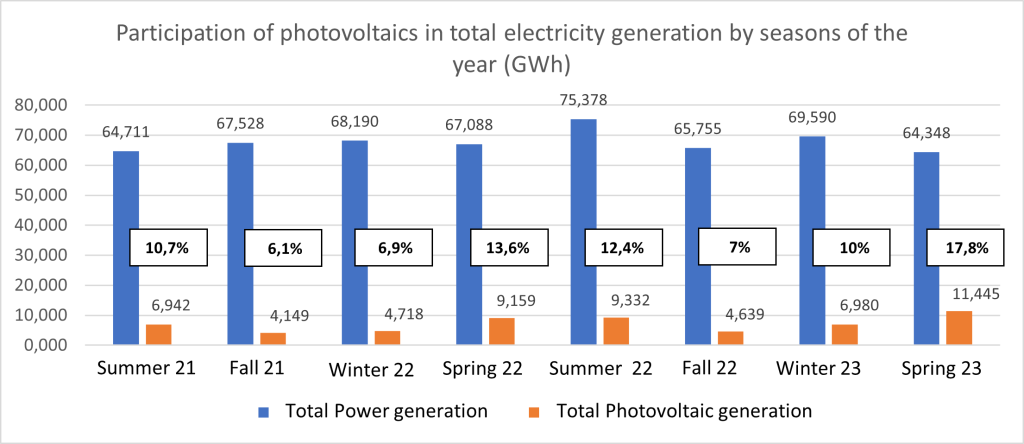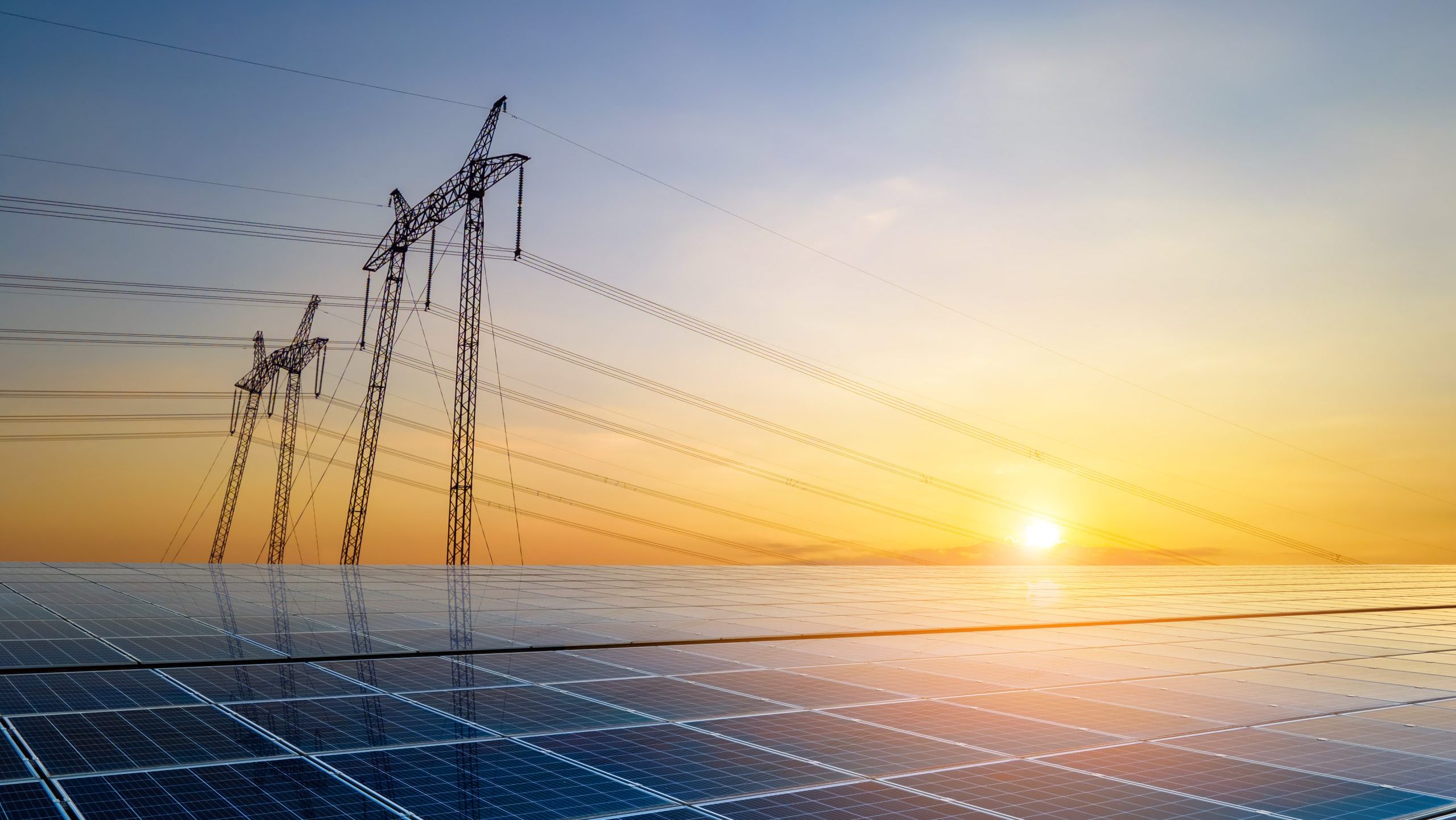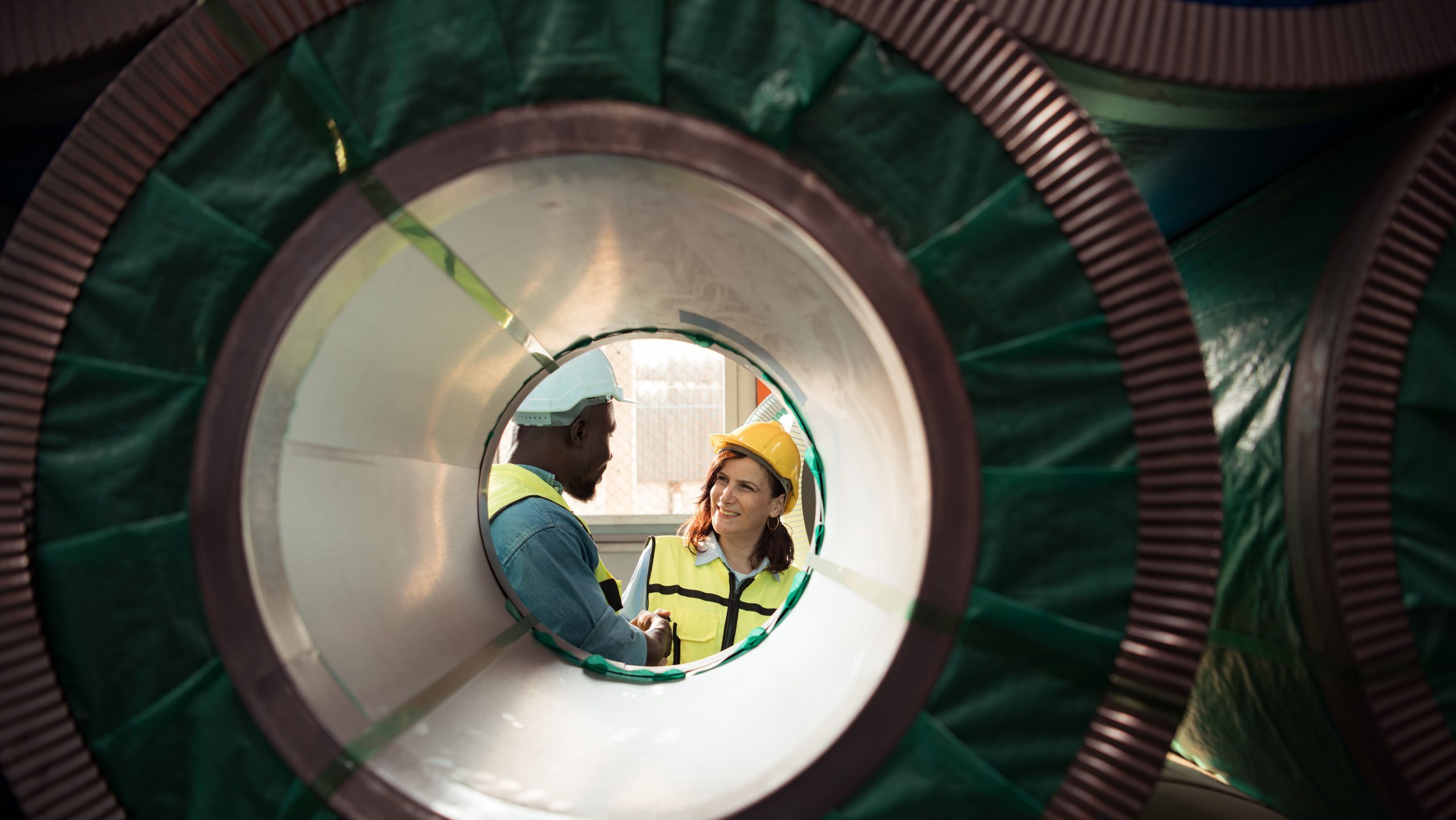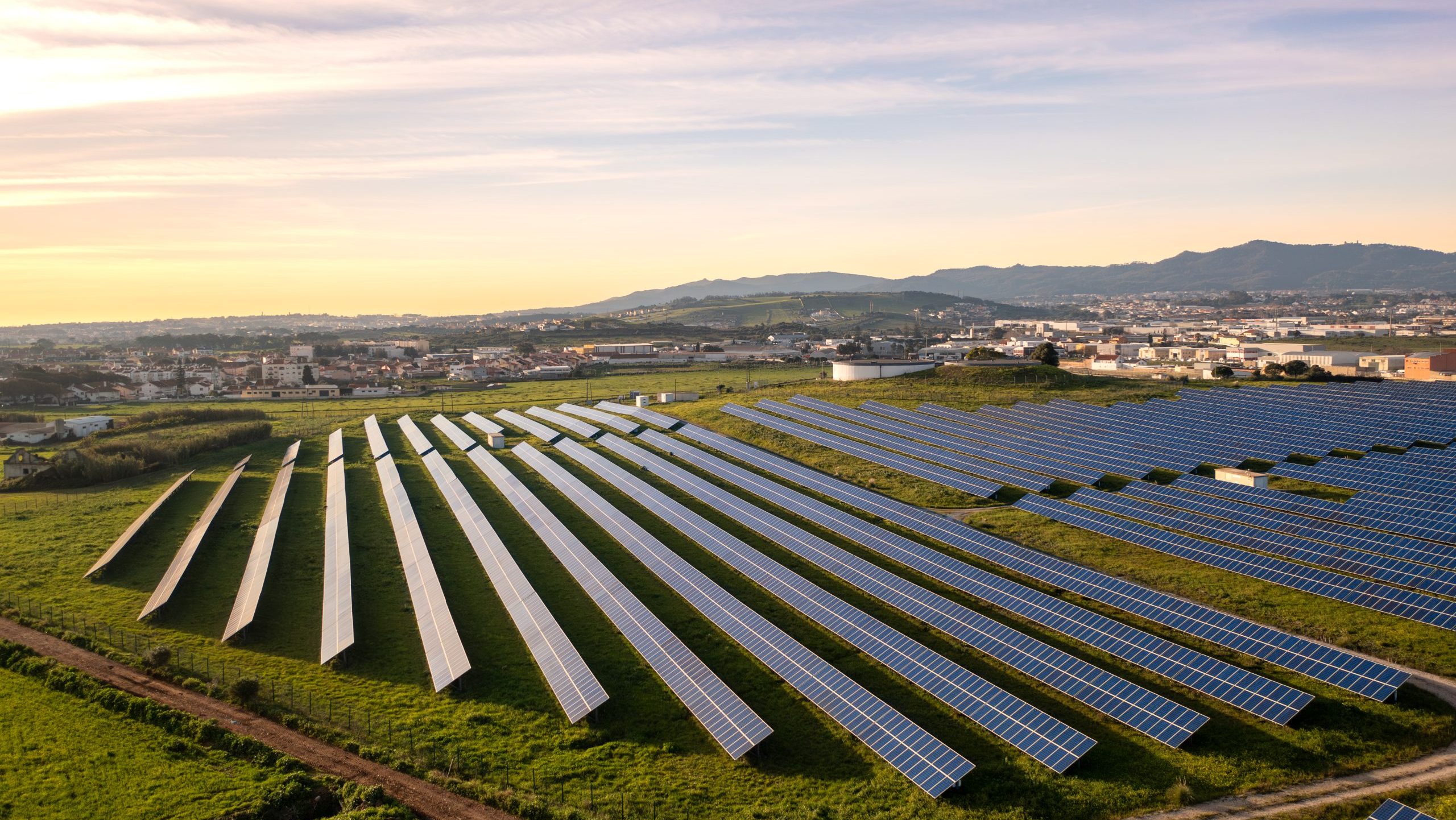Although at first glance it might seem that summer is the most propitious season of the year for the generation of photovoltaic energy, the reality is that the latest data shows that spring is the time in which this source of energy has accounted for a greater percentage of electricity production in Spain. In fact, during this past spring, photovoltaics has reached not only its highest generation volume with almost 11.5 GWh, but also its maximum participation in the energy mix, representing close to 18% of the total electricity produced and surpassing with you grow 13.6% from the previous spring. This is especially relevant data, and even more so if we consider that during these months of May, June, and July the lowest amount of total energy in recent years has been generated, if measured by seasons of the year.
Although we all like to talk about records and extraordinary achievements, perhaps the most encouraging news for this technology is the fact of verifying its growth during all seasons of the year, with data as spectacular as during winter (January-March 2023). 10% of the electricity produced in Spain originated from photovoltaic solar energy, well above the 7% it represented last winter.
It is obvious that the generation of photovoltaic energy will always be greater at the times of the year with the greatest number of hours of sun, but these data show us the important role that this technology can play in the energy mix at any time of the year. For this, it is essential to work on efficiency. Technology and innovation play a key role and companies in the solar structures and trackers sector play a fundamental role by providing technologies designed to maximize the capture of solar energy and optimize the performance of solar panels, either through fixed structures or using trackers, which, by following the movement of the sun throughout the day, receive a greater amount of direct solar radiation, which translates into more electricity generation by up to 40%.
Spring and summer provide great energy production potential for photovoltaic technology, thanks to the abundant available sunlight. But we must think further and consider that energy efficiency will be a key element so that these electricity generation ratios achieved are maintained in the rest of the seasons of the year and an energy supply based on, among other issues, is guaranteed. optimal choice of structures suitable for each photovoltaic installation.
By combining the intelligent use of energy, digitization and quality and typology of materials with solar generation, we can move towards a cleaner and more sustainable future, taking advantage of the particularities of each season.
We do know one thing for sure: every sunbeam is worth it, you just have to use it in the most efficient way.

Source: Red Eléctrica and own calculations
Note: The duration of the seasons is calculated by calendar months: Spring (April-May-June); summer (July, August, September); fall (October, November, December); winter (January, February, March)
Javier Iglesias de Diego
Sales Manager ESAsolar







